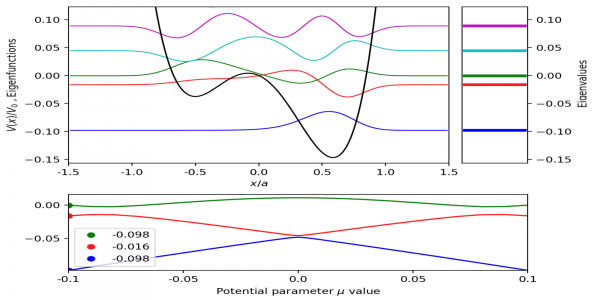OSSCAR supports teaching, fosters computational thinking with interactive approach
by Carey Sargent, EPFL, NCCR MARVEL
Teachers across scientific disciplines are increasingly turning to software-based tools such as notebooks or illustrative codes to complement more traditional classroom approaches. These tools allow educators to use live examples and engaging visualization to demonstrate complex or abstract concepts in an interactive environment or propose virtual laboratories, all of which help students to gain intuition and facilitate understanding.
While these advantages and the growing relevance of remote education—an effect bolstered by the COVID19 pandemic—have spurred many efforts, various barriers have nonetheless slowed widespread adoption and sharing of such software-based teaching tools.
Educators may not have sufficient time to create new material for specific classes and may be discouraged by a lack of agile development and deployment environments. Once developed, managing material to avoid software obsolescence or facilitating updates for new content are additional burdens. The risk of duplicating efforts is high with no centralized repository of digital lessons, or of the ingredients for creating software teaching tools. On the student side, learners may be slow to adopt and use the tools if the technologies they’re based on are not sufficiently user friendly. Having no coherent platform likely means having to switch from one technological solution to another when changing class, a potential barrier to enthusiastic uptake.

Figure 1. OSSCAR applications were developed to address the general topic of the solution of the Schrödinger equation to demonstrate how an advanced topic can be split into smaller self-contained notebooks. The figure presented here shows avoided crossing in a 1D asymmetric quantum well.
In the paper “OSSCAR, an open platform for collaborative development of computational tools for education in science,” recently published in the journal Computer Physics Communications, a team of contributors led by Giovanni Pizzi, project leader of NCCR MARVEL's Pillar 3 (Digital Infrastructure of Open Simulations and Data) and leader of the "Materials Software and Data" group at the Paul Scherrer Institute (PSI), and by Sara Bonella, deputy Director at between the Centre Européen de Calcul Atomique et Moléculaire (CECAM) and co-PI in the same MARVEL pillar, present a new platform that looks to address these difficulties: the Open Software Services for Classrooms and Research (OSSCAR). The platform stems from a project funded in 2019 by the EPFL Open Science Fund and was developed in collaboration between CECAM and MARVEL.
The principal contributions of OSSCAR are threefold: to provide custom widgets for domain-specific visualization types; to provide custom educational content tailored for a number of courses in the fields of computational physics, chemistry and materials science; and, finally to provide clear documentation. All material is available on OSSCAR to transfer the team’s gathered know-how on combining various open technologies to develop new educational applications open to input and feedback from the community. OSSCAR was inspired, the researchers said, by the software architecture developed as part of AiiDAlab, a platform designed to provide easy access to research-oriented software, workflows and tools via a web interface. OSSCAR adapts and applies these concepts and technologies for education purposes.
Specifically, OSSCAR combines and builds on a set of well-established software tools to create a web-based collaborative environment that is meant to provide educational resources, but also to enhance awareness and adoption of best practices in Open Science. This includes principles such as open source, open access, and open educational content: OSSCAR addresses them, sequentially, by providing links to source code in all notebooks, making all notebooks accessible without a paywall and providing all teaching materials developed within the OSSCAR project to any instructor who may want to use them in their classroom.
The paper first demonstrates the appearance and structure of an OSSCAR notebook through the example given by a classic problem in quantum mechanics: the double-well potential. It then gives technical details on the tools used to develop new notebooks and justifies the choices of its developers. Some selected examples that are based on notebooks developed for Master-level courses in physics, chemistry and materials science are also shown. These examples, which all relate to quantum-mechanical problems, show how OSSCAR notebooks can be used as modules that can be combined in various ways for different classes. The platform is programmed in Python, and Jupyter and JupyterLab serve as the programming interface and environment.
OSSCAR is at the early stages of development in terms of content. Intended as an open repository to be built in collaboration with students and teachers in various scientific disciplines, the team encourages contributions from interested groups.
References: D. Du, T. Baird, S. Bonella and G. Pizzi, OSSCAR, an open platform for collaborative development of computational tools for education in science, Computer Physics Communications, 282, 2023, 108546 (2022).
Low-volume newsletters, targeted to the scientific and industrial communities.
Subscribe to our newsletter